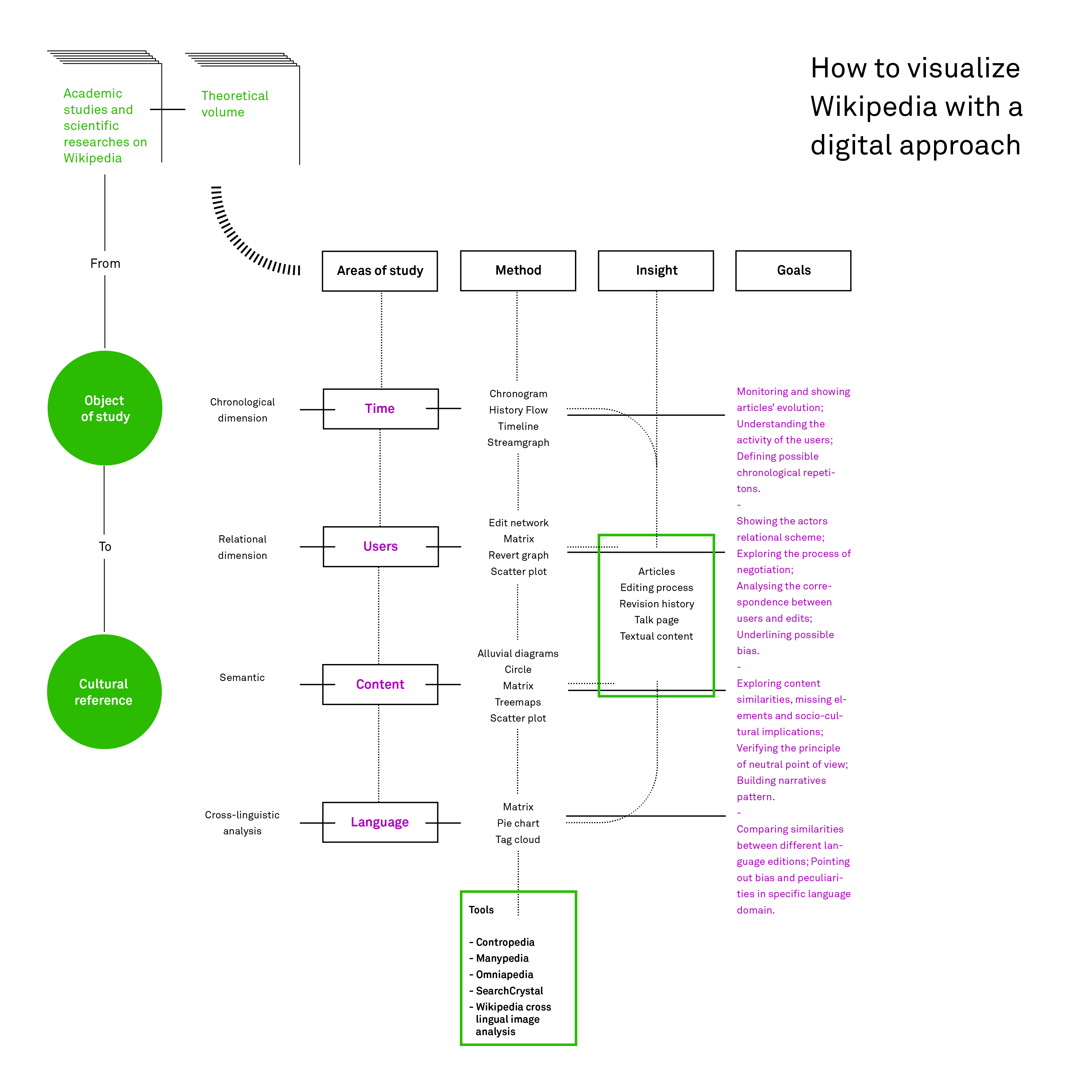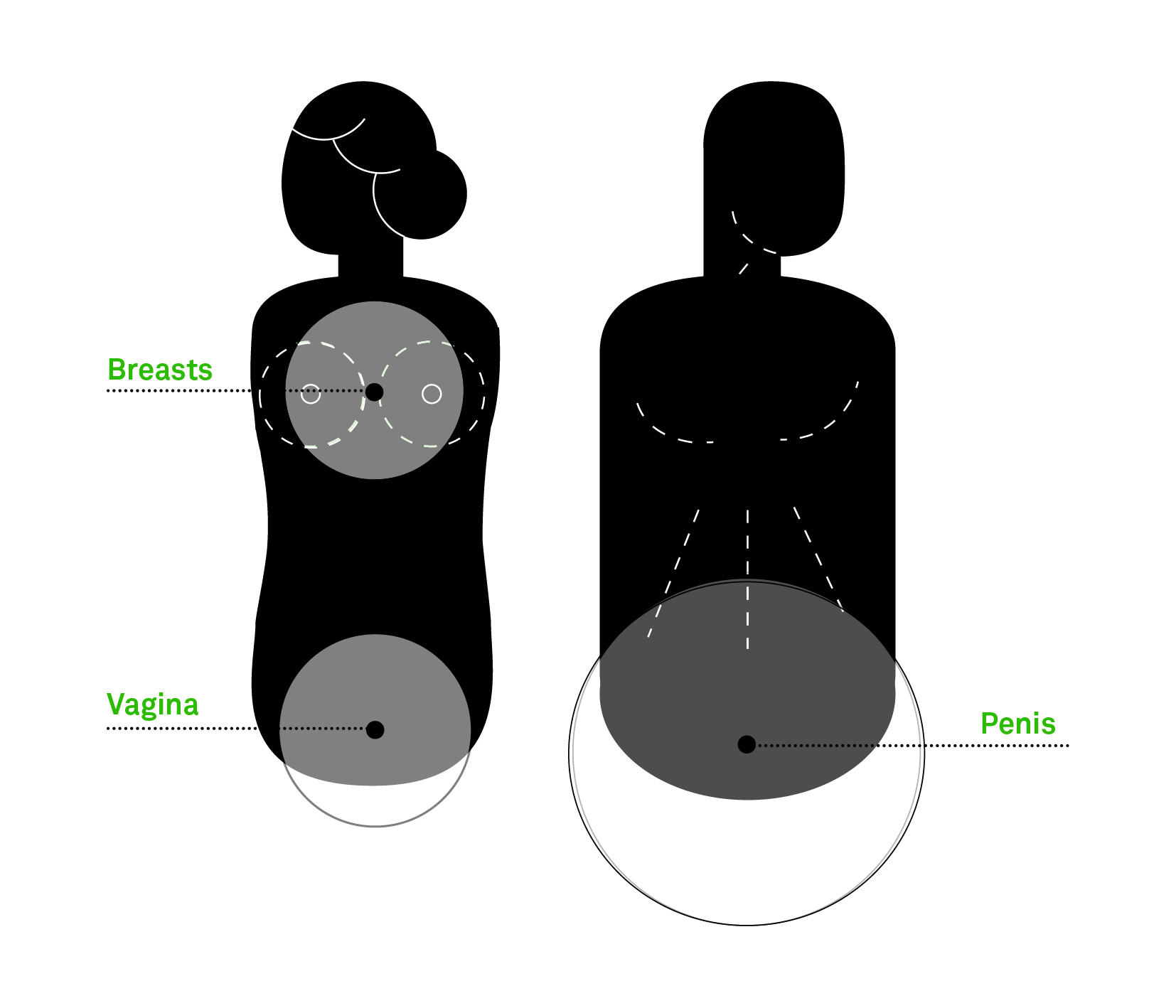Abstract
You can’t escape from gender declares Uta Brandes, founder of the international Gender Design Network (iGDN) and professor at KISD. Gender is recognized as the first and most important social construction process in human life. It shapes the individual identity and the relational network in its complexity. Throughout history, social studies, cultures, advertisements, mass media and other forms of visual artifacts have not only been influenced by gender stereotypes but have also been deeply influential in the process of shaping perception about gender. Not so far, social norms and common sense have persuaded designers and image-makers to hand the responsibility of achieving informed choices about portraying men and women in a sensitive and balanced way. In this study, the aim is to undertake an exploration into the relationship between gender bias and Wikipedia, and attempt to understand how the information flux can be biased in multilingual collaborative source of human knowledge. According to the goal, the complementary research has been switched in two parts: one side comprehends a volume about the theoretical assumptions, the context analysis, the case-studies and the detailed project description; the other side concerns a narrative exploration composed by the set of visualizations, the resulting observations and the applied methodologies. The conceptualization of digital social research provides a multidimensional perspective that goes beyond the evolving cultural change and societal conditions related to the Web and its implications. Analyzing through digital methods involves seeking to learn from an existing method related to the dominant devices online, and redesigning them to achieve a cultural and social research. The goal is to mix info-web and social web. reorganizing contents and repurposing an assembling device techniques. The general protocol starts taking all the outset of the natively digital contents available about a specific topic or goal, as links, threads, tags, and observing how devices, such search engines or platforms, deal with them. This approach taken in the digital social research can be also referred to the examination of Wikipediain terms of temporal variation, semantic dimension, relational networking and controversial issues. The development of this study means the exam of a specific topic which is shared in many version as well a singular one, considering the neutral point of view perspective and the implicit consensus-building process, not always held by contributors. The comparisons across language versions in Wikipedia are structured on a form of web content analysis which highlight on basic elements involved in the article: as its title, table of contents (TOC), images and references (Rogers et Sendijarevic, 2012). At the end, a final observation attempts to consider the results gained and compared to the research questions keeping in mind the socio-cultural diversity people live in.
Research question
This thesis concerns the development of an Atlas exploring new aspects of gender research in the collaborative encyclopaedia Wikipedia. A study by the Wikimedia Foundation showed that fewer than 13% of Wikipedia editors (2011) identified themselves as female, evidence of the practical effect of a disparity, the reasons for which are a potential subject for discussion among experts, scholars, mass media and involved people. Based on the findings, this project aims to identify those linguistic and cultural differences tending to restrict a contribution to information equally divided between the genders. The overall research tends to promote social research capable of exploring aspects of the gender question from the less conventional perspective of a linguistic comparison.
Methods

The framework results from a comprehensive research about digital methods, visualization and Wikipedia based on the collection of academic papers and online sources.
This project achieves a visual exploration of the gender issue on Wikipedia as a proxy. Two pages relating to opposing concepts – Man and Woman – translated into different language versions have been selected. The research moves along two established comparative axes: one perspective relates to the observation of the selected articles composed in the same language; and another perspective regards a cross-linguistic comparison between different encyclopedic version. The linguistic versions considered in the research have been chosen on the basis of their level of complexity as defined by the number of articles based on up-to-date statistics on Wikipedia. Based on this list, five language versions were extracted – German, English, Spanish, French and Italian – which would enable an active, equivalent comparison in respect of the subject under discussion. The collaborative nature of Wikipedia defines new linguistic geographies. The linguistic phenomena are therefore examined beyond their limited territorial coverage. This enables possible gender differences to be examined in a restricted, but at the same time generalized context. The whole procedure explores every steps in a constant observation starting from micro details to a macro preview: it means a strictly consideration of the single article items to return to a comprehensive cross-linguistic overview. These lens refer to three main frames: the chronological evolution of the articles’ informative content related to its editing process; the relational dimension resulting from the both internal and external networking activity of Wikipedia; the tagging process enables to detect edits stored in the revision history page.
Results

This focus offers a view on the most mentioned parts of the body comparing their recurrence in the different articles; by tagging acts of vandalism, sexually offensive names and comments aimed at the body and, more specifically, the male and female sex organs have been catalogued.
Comparing to the low female participation highlighted by the Wikimedia Foundation editors survey (2011), the developed project explores the practical effects of gender disparities through the analysis of Wikipedia. The reasons behind the gender gap stated by Sue Gardner (2011) have deeply verified showing an interface platform not sufficiently user-friendly which is not enable to cover the increasing complexity of the bureaucratic system. A consequent perspective relates to the users’ dynamics to achieve the consensus in collaborative writing. This process confirms to be discourage by veteran users frequently deleting new contents or being discriminatory against minorities’ points of view. That’s why the conflict’s prerogative can be found in the acknowledgment of vandalism which perpetuated over time through stereotyped comments and sexist insults addressed to women. These acts may be seen as real mirror of a compromised socio-cultural situation. The conflicting themes of the current debate, related to political and societal role of women, seem to be discussed in a shallow dimension breaking the contents’ mobility of the collaborative encyclopedia which used to be driven by socio-cultural button topics in its implementation (Kittur and al, 2009). Considering Wikipedia as a proxy to explore the gender issue on digital communities, the analyzed papers and case-studies, and the effective research project developed have remarked how the impaired gender participation and the lack of female-related informative contents reflect a general and current knowledge gap.

